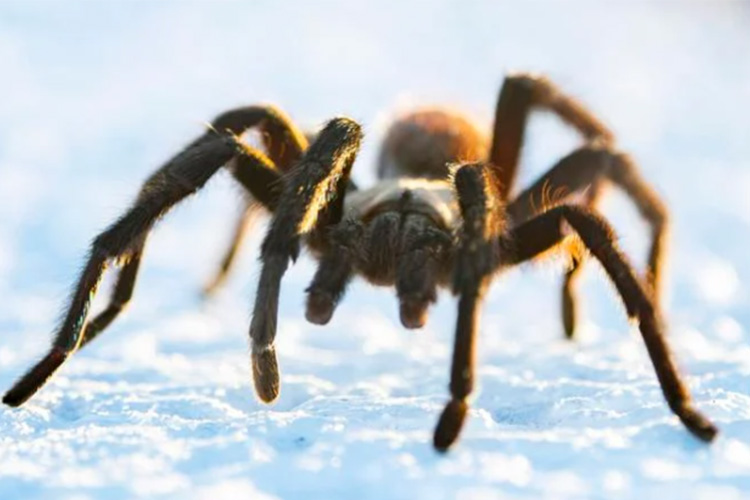
A tarantula who migrated on the side of Highway 350 outside of La Junta Colorado. photo by Christian Murdock
Tarantulas have “invaded” the southeastern plains of Colorado in search of love.
Got arachnophobia? Colorado may not be the place for those who fear eight-legged creatures. It’s that time of the year again when huge flocks of tarantulas exit their burrows in the Southeastern plains of Colorado to begin their search for a mate. The spiders begin their migration in late August and continue throughout the month of September. This is referred to as the first wave. Then, in October, a second wave of tarantulas make their migration as well.
The tarantulas that are seen during the migration are a type of Texas brown and Oklahoma brown species. They can be spotted near La Junta, in the Southeastern region of Colorado. The size of these tarantulas are about that of a fist, or four to five inches in leg span.
Male tarantulas start to search for mates when they reach sexual maturity, which is about 8-10 years of age. In order to find a mate, a male tarantula goes on a hunt for a female’s burrow. When he finds one, the male tarantula digs his legs into the female spider’s burrow and waits for her to come out of her burrow to breed.
Maia Holmes, an entomologist and instructor at the College of Agricultural Sciences, describes the process by which tarantulas mate: the male tarantula does a “special knock” on the female’s burrow, and the female will either accept or reject the male.After the tarantulas mate, the female will eat the male. This phenomenon is known as sexual cannibalism, and is common with many types of spider species.
As scientists observed tarantula mating patterns, they discovered that the spiders are more successful in finding mates during dusk. However, during some years, the process is different due to conditions like drought, which make mating more successful regardless of the time of day.
Many fear that the tarantulas pose a risk to Colorado residents. But in reality, there’s nothing to worry about. There have been no records of people getting injured or killed by the tarantulas seen during the migration. In fact, these species of tarantulas have no intent to harm humans, claims Mario Padilla, who is an entomologist at the Colorado Butterfly Pavilion and Insect Center. In the rare case that people do get bit by one of the spiders, it will likely feel like a bee sting – painful, but not dangerous. In other words, people should have no worries about these crawlers causing harm.
Those interested in the migration can learn more at the Butterfly Pavilion, which is about a 15 minute drive away from downtown Denver. Visitors can even hold Rosie, the resident tarantula at the Butterfly Pavilion. If people are interested in seeing the migration in real time, but don’t want to get near the creatures, it’s recommended for them to go to Vogel Canyon, which is 13 miles south of La Junta. People can take hikes to see the migration for themselves or they can avoid the spiders until the annual event comes to an end.